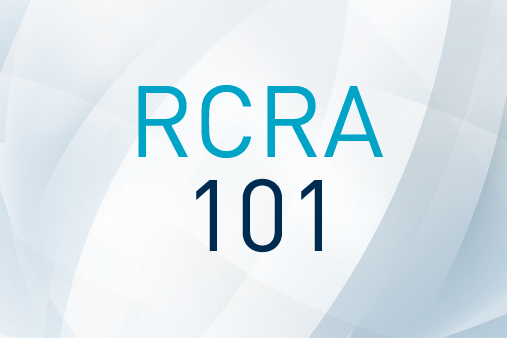The Resource Conservation and Recovery Act (RCRA) was enacted to regulate the way wastes are managed and disposed of to protect human health and the natural environment. During the rule making process, the EPA decided to exclude certain wastes, either partially or fully, from the RCRA regulations. These exclusions were selected for one of two reasons. First, some wastes were already being regulated by other laws or government agencies and additional regulation was not needed. Secondly, the EPA wanted to encourage generators to recycle, reuse, and reclaim wastes and did not want the new regulations to hinder those options. Recently, the exclusion list was expanded by the new Definition of Solid Waste rule to provide additional legitimate recycling options to generators.
Generators can benefit greatly from evaluating their waste and determining if a waste exclusion is applicable. The understanding and utilization of waste exclusions can provide a generator the following benefits:
- Reduction in disposal costs
- Recovery of valuable products from waste
- Preservation of natural resources
- Recovery of raw materials on site for direct reuse
- Reduction in generator status
It is important to note that many exclusions do not universally exclude a certain type of waste. Some exclusions are only available to certain types of industry and some exclusions can only be used if the waste is reused or recycled in a specific manner.
The complete list of exclusions is provided at 40 CFR 261.4. The list of example exclusions provided below is just an overview and generators should consult the regulations and understand the details included with each exclusion before utilizing an exclusion to manage a waste stream.
The materials listed at 40 CFR 261.4 (a) are excluded from being solid wastes and all solid waste regulations. Some examples are:
- Domestic sewage
- Industrial wastewater discharges if regulated/managed under the CWA
- Certain mining waste used in the extraction of minerals
- Pulping liquors
- Spent sulfuric acid that is used to make virgin sulfuric acid
- Oil-bearing secondary hazardous materials from petroleum refining
- Secondary materials that can be directly returned to a process
- Certain wood-preserving wastes
- Scrap metal
- Shredded circuit boards
- Cathode ray tubes
- Solvent contaminated rags that are sent for cleaning
- Hazardous secondary materials that are reclaimed on-site; or at another site controlled by the same generator; or is reclaimed under a tolling agreement; or is reclaimed by a verified reclamation facility
The materials listed at 40 CFR 261.4 (b) are still classified as solid wastes but are exempt from hazardous waste regulations.
- Household waste
- Mining overburden
- Fly ash from burning coal
- Certain mineral and metal refining wastes (slags)
- Oil filters
- Cement kiln dust
- Solvent contaminated rags that are sent for disposal
- Samples undergoing analysis
- Treatability study samples
Proper utilization of appropriate RCRA exclusions is a key aspect of WTS’ approach to powering the circular economy, while helping our clients to avoid disposal costs. Your WTS representative stands ready to answer any questions that you may have on this topic.

